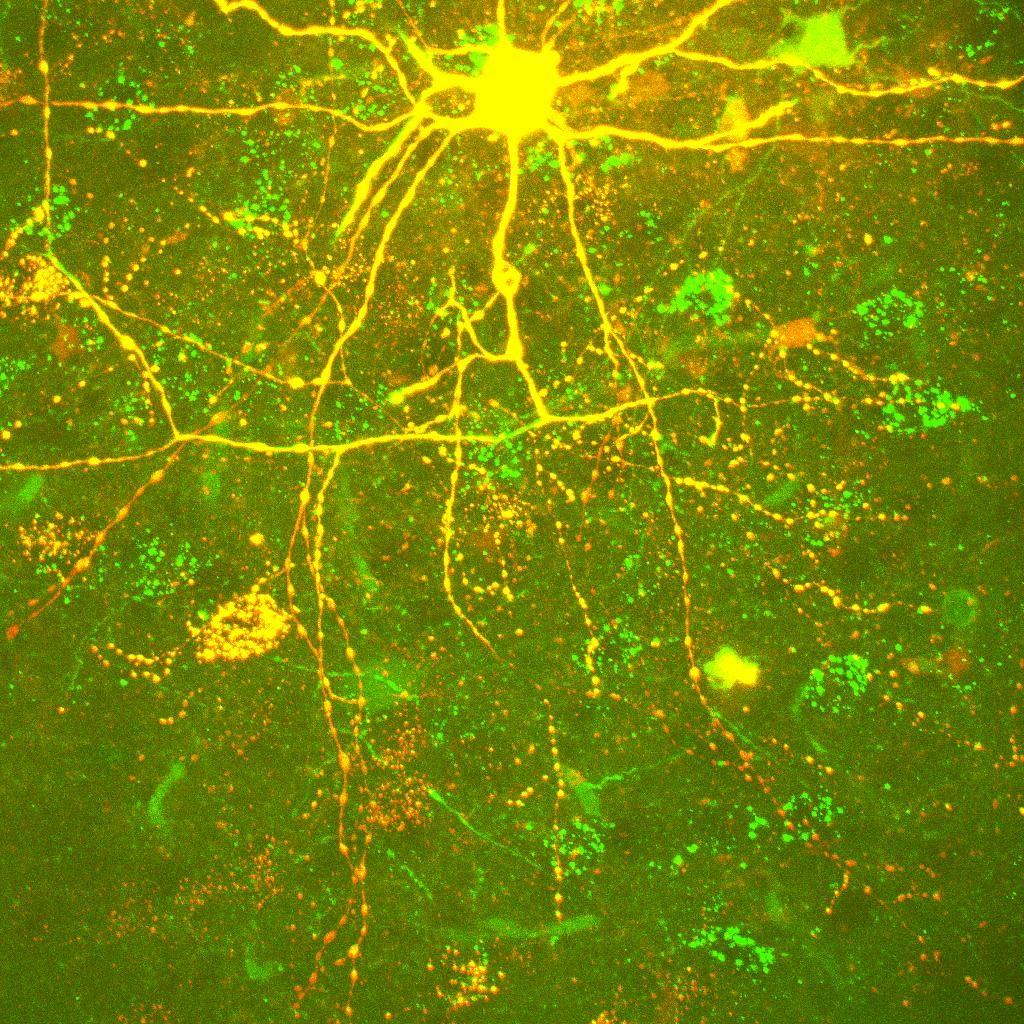By David Ivanov, Biochemistry and Molecular Biology, ’15
A group of researchers studying brain cells have found a new potential target for pharmacological therapies that may help treat Alzheimer’s disease. Beta amyloid plaque, which appears to be a toxic build up of fragments of amyloid precursor protein (APP) in the brain, has long been associated with Alzheimer’s disease, and has been one of the major targets for Alzheimer’s treatment. Amyloid precursor protein plays an important role in the brain, and when this protein is broken down in nerve cells the toxic byproduct beta amyloid is formed. Cellular compartments enclosed by a membrane, called vesicles, are responsible for transporting proteins such as APP throughout the cell. Vesicles are usually stabilized by groups of proteins that keep the vesicle together so that the APP is ‘shipped’ to where it needs to go without being degraded. The group of proteins responsible for stabilizing the vesicles used for APP is called the retromer complex.
Evidence suggests that defects in the retromer complex of a neuronal cell lead to higher levels of beta amyloid in neurons, and potential weaknesses in the retromer complex have been previously found. The protein interactions at the junction of the proteins of the retromer could be weakened, which leads to a degradation and reduction in the amount of retromer complex in the cell. Lower levels of retromer complex can lead to an increase of APP breakdown because the vesicles holding the APP are no longer being ‘protected’ by the retromer complex. The breakdown of APP can then lead to the formation of beta amyloid plaque in brain cells. The researchers used imaging and computer modeling to predict compositions of small molecules that could bind and strengthen the interactions at the protein-protein interfaces of the retromer, thus leading to more structural stability and higher concentrations of the retromer complex in cells. The researchers tested one so-called chaperone, R55, with in vitro studies of cultured neural cells of the hippocampus. When compared to a control, introduction of R55 was shown to increase retromer levels in the hippocampal neurons. This establishes proof of concept that pharmacological chaperone molecules could be used to stabilize the retromer complex and lead to reduction of beta amyloid formation. In vivo studies need to be done to confirm these small molecules can have an actual therapeutic effect in patients suffering from Alzheimer’s disease.
Mecozzi, Vincent J, Berman, Diego E, Simoes, Sabrina, Vetanovetz, Chris, Awal, Mehraj R, et al.(2014) Pharmacological chaperones stabilize retromer to limit APP processing. Nature Chemical Biology doi:10.1038/nchembio.1508
Image credit:
“merge_max” by Mark Miller is licensed by CC BY-ND 2.0

